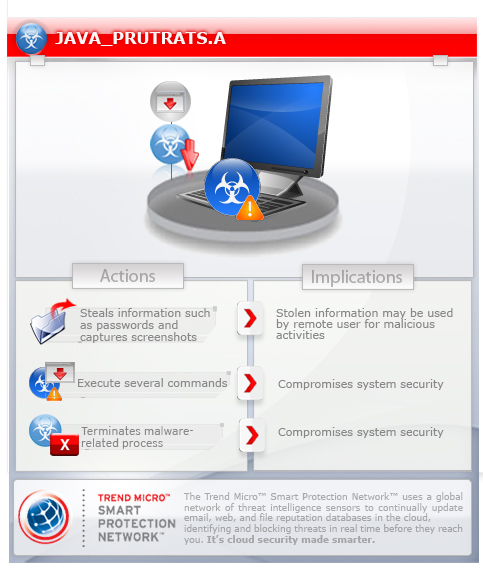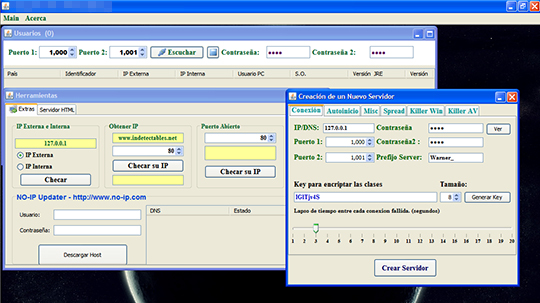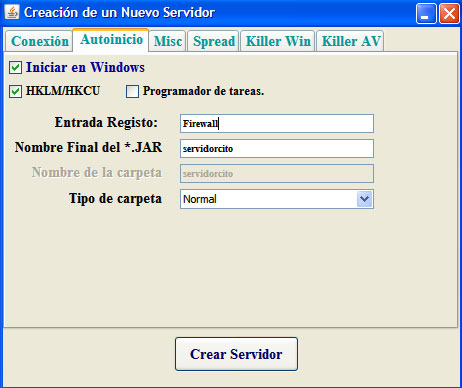JAVA_PRUTRATS.A
Windows 2000, Windows Server 2003, Windows XP (32-bit, 64-bit), Windows Vista (32-bit, 64-bit), Windows 7 (32-bit, 64-bit)


Threat Type: Backdoor
Destructiveness: No
Encrypted: No
In the wild: Yes
OVERVIEW
This is a backdoor builder written in Java. It has been seen as a free download in underground forums. This opens a possibility that malicious users may use this tool to create a connect-back client .JAR file on the infected computer.
To get a one-glance comprehensive view of the behavior of this Backdoor, refer to the Threat Diagram shown below.

This is a backdoor remote access tool (RAT) builder written in Java. It is capable of creating a client .JAR file to allow attackers to control a system.
This backdoor arrives on a system as a file dropped by other malware or as a file downloaded unknowingly by users when visiting malicious sites.
TECHNICAL DETAILS
Arrival Details
This backdoor arrives on a system as a file dropped by other malware or as a file downloaded unknowingly by users when visiting malicious sites.
NOTES:
This is a backdoor remote access tool (RAT) builder written in Java.


It is capable of creating a client .JAR file to allow attackers to control a system. It may execute the following commands to an infected system:
- Capture Screenshots
- Download and execute files
- Get passwords from browsers and messengers
- List and kill processes
- Manage files
- Open URL in a browser
- Perform DOS attack
- Reboot
- Send pop-up messages
- Stop Connection
- Uninstall
- Update copy
It contains an option to kill the following specific anti-malware related processes:
- AVG
- Avira Internet Security
- Kaspersky PURE
- Malwarebytes Anti-Malware
- McAfee
- MsConfig
- Nod32
- Norton
- Task Manager
- UAC
- Windows Defender
It also contains an option to encrypt its class files and install plug-ins. It has the option to set an autostart registry or scheduled task to enable automatic execution every system startup.

SOLUTION
Step 1
Before doing any scans, Windows XP, Windows Vista, and Windows 7 users must disable System Restore to allow full scanning of their computers.
Step 2
Identify and terminate files detected as JAVA_PRUTRATS.A
- Windows Task Manager may not display all running processes. In this case, please use a third-party process viewer, preferably Process Explorer, to terminate the malware/grayware/spyware file. You may download the said tool here.
- If the detected file is displayed in either Windows Task Manager or Process Explorer but you cannot delete it, restart your computer in safe mode. To do this, refer to this link for the complete steps.
- If the detected file is not displayed in either Windows Task Manager or Process Explorer, continue doing the next steps.
Step 3
Scan your computer with your Trend Micro product to delete files detected as JAVA_PRUTRATS.A. If the detected files have already been cleaned, deleted, or quarantined by your Trend Micro product, no further step is required. You may opt to simply delete the quarantined files. Please check this Knowledge Base page for more information.
Did this description help? Tell us how we did.


